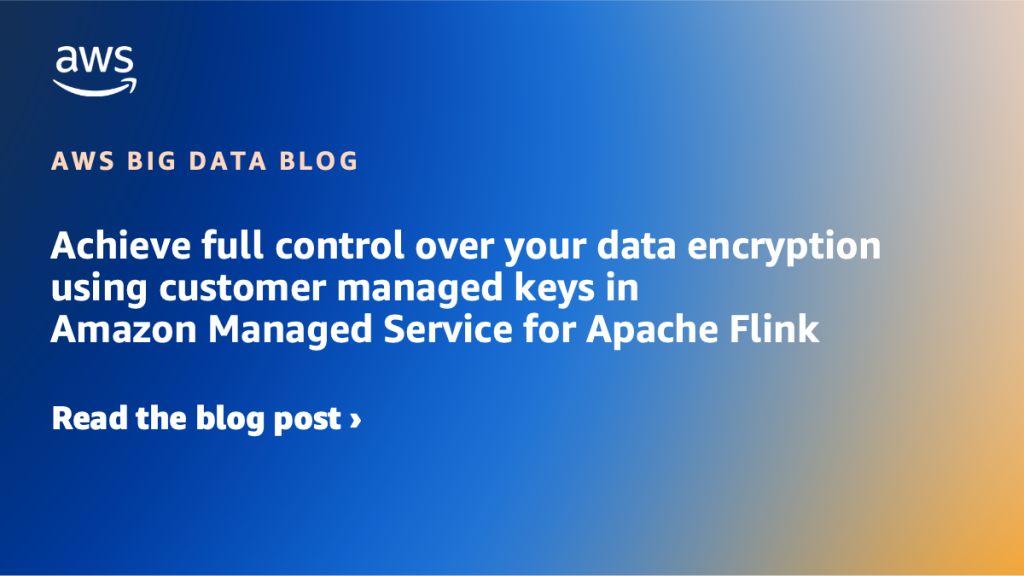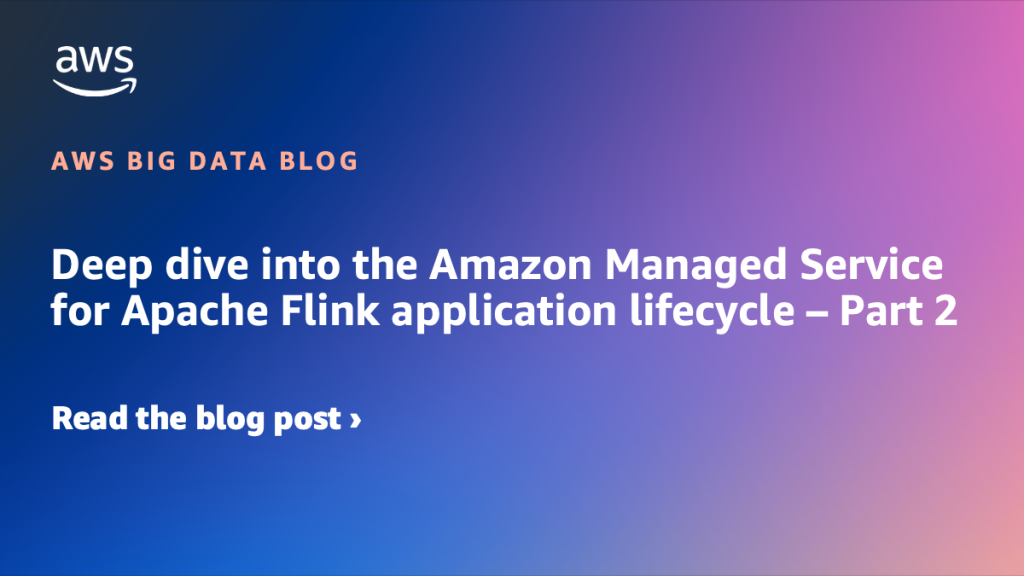AWS Big Data Blog
Category: Amazon Managed Service for Apache Flink
Achieve full control over your data encryption using customer managed keys in Amazon Managed Service for Apache Flink
Encryption of both data at rest and in transit is a non-negotiable feature for most organizations. Furthermore, organizations operating in highly regulated and security-sensitive environments—such as those in the financial sector—often require full control over the cryptographic keys used for their workloads. Amazon Managed Service for Apache Flink makes it straightforward to process real-time data […]
Deep dive into the Amazon Managed Service for Apache Flink application lifecycle – Part 2
In Part 1 of this series, we discussed fundamental operations to control the lifecycle of your Amazon Managed Service for Apache Flink application. In this post, we explore failure scenarios that can happen during normal operations or when you deploy a change or scale the application, and how to monitor operations to detect and recover when something goes wrong.
Deep dive into the Amazon Managed Service for Apache Flink application lifecycle – Part 1
In this two-part series, we explore what happens during an application’s lifecycle. This post covers core concepts and the application workflow during normal operations. In Part 2, we look at potential failures, how to detect them through monitoring, and ways to quickly resolve issues when they occur.
How Nexthink built real-time alerts with Amazon Managed Service for Apache Flink
In this post, we describe Nexthink’s journey as they implemented a new real-time alerting system using Amazon Managed Service for Apache Flink. We explore the architecture, the rationale behind key technology choices, and the Amazon Web Services (AWS) services that enabled a scalable and efficient solution.
Unlock self-serve streaming SQL with Amazon Managed Service for Apache Flink
In this post, we present Riskified’s journey toward enabling self-service streaming SQL pipelines. We walk through the motivations behind the shift from Confluent ksqlDB to Apache Flink, the architecture Riskified built using Amazon Managed Service for Apache Flink, the technical challenges they faced, and the solutions that helped them make streaming accessible, scalable, and production-ready.
Process millions of observability events with Apache Flink and write directly to Prometheus
In this post, we explain how the new connector works. We also show how you can manage your Prometheus metrics data cardinality by preprocessing raw data with Flink to build real-time observability with Amazon Managed Service for Prometheus and Amazon Managed Grafana.
Governing streaming data in Amazon DataZone with the Data Solutions Framework on AWS
In this post, we explore how AWS customers can extend Amazon DataZone to support streaming data such as Amazon Managed Streaming for Apache Kafka (Amazon MSK) topics. Developers and DevOps managers can use Amazon MSK, a popular streaming data service, to run Kafka applications and Kafka Connect connectors on AWS without becoming experts in operating it.
Handle errors in Apache Flink applications on AWS
This post discusses strategies for handling errors in Apache Flink applications. However, the general principles discussed here apply to stream processing applications at large.
Introducing the new Amazon Kinesis source connector for Apache Flink
On November 11, 2024, the Apache Flink community released a new version of AWS services connectors, an AWS open source contribution. This new release, version 5.0.0, introduces a new source connector to read data from Amazon Kinesis Data Streams. In this post, we explain how the new features of this connector can improve performance and reliability of your Apache Flink application.
Top 6 game changers from AWS that redefine streaming data
Recently, AWS introduced over 50 new capabilities across its streaming services, significantly enhancing performance, scale, and cost-efficiency. Some of these innovations have tripled performance, provided 20 times faster scaling, and reduced failure recovery times by up to 90%. We have made it nearly effortless for customers to bring real-time context to AI applications and lakehouses. In this post, we discuss the top six game changers that will redefine AWS streaming data.









